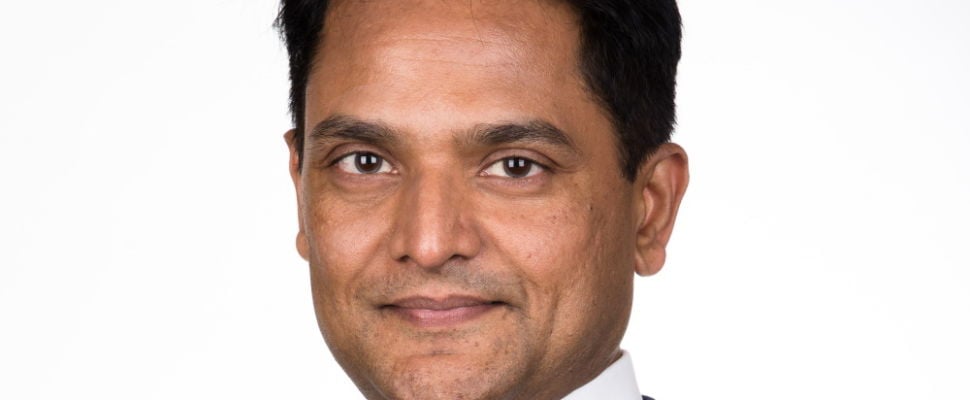Japanese giant Takeda has a new Head for APAC; Indian national Dr Mahender Nayak, previously the firm’s India, CIS, Middle East, Turkey & Africa (ICMEA) lead. Nayak will relocate to Singapore, where he has spent almost half of his 20-year pharma career, and take on responsibility for the vast Asia-Pacific region in the wake of a pivotal world-first approval for the company’s dengue vaccine in Indonesia.
Writing on LinkedIn, Nayak said, “I look forward to building on the team’s great momentum and driving critical issues around patient access, sustainable healthcare systems and business growth while enhancing our workplace culture.
“This new role brings me back to Singapore where I started my career with Takeda 11 years ago. Much has changed since then for Takeda and for me. What has remained the same is the commitment of our teams to deliver world class innovation to improve the lives of patients. I look forward to supporting them to deliver this.”
11-year Takeda veteran Nayak – a trained physician – started out at Takeda APAC in Singapore before moving to Global in Zurich for two years, and then returning to manage Takeda Korea for three years. Subsequently, he was part of the Shire portfolio integration process in the leadership team for Growth and Emerging Markets (GEM) (Russia, Brazil, China, South Andean Mexico, Asia Pacific and ICMEA), before becoming ICMEA area head. As Nayak explained to PharmaBoardroom in 2020, “Things happen very fast at Takeda; it is an agile company.”
Willemsen: Bitten by the biotech bug
Nayak replaces Thomas Willemsen in the role, who leaves Takeda to take on a new challenge in the biotech industry as president and CEO of Singapore-based cell-therapy start-up Tessa Therapeutics, effective October 1st.
Also on LinkedIn, Willemsen commented that “After over two decades contributing in major pharmaceutical MNCs to enhance access to medicines and vaccines, I have decided to join the world of biotech start-ups … Tessa is at the forefront of developing the next generation of CAR-T therapies for haematological malignancies and solid tumors. Its unique approach to autologous and allogeneic cell therapy has been supported by some very promising data in the clinic. With matured operational capabilities and a highly experienced board, Tessa is leading the way in biopharma innovation in the region. I am very excited to be part of this journey and look forward to working with the entire Tessa team as we enter a decisive phase of clinical development to bring these important therapies to patients with high unmet medical need.”
Takeda APAC: Mixed Strategy Needed
Top of Nayak’s in-tray in his new role will be overseeing the rollout of Takeda’s vaccine against dengue in Indonesia and attempting to bring it to other countries in the region. Indonesia recorded over 63,000 dengue cases and almost 600 deaths in the first half of 2022 alone.
A varied grouping of countries, containing both developed and growth markets, APAC throws up particular changes in terms of strategy, especially for one of Takeda’s key areas of focus following the acquisition of Shire in 2019: rare diseases. The company’s other key therapeutic areas are oncology, neuroscience, gastroenterology (GI), plasma-derived therapies, and vaccines.
As Willemsen explained to PharmaBoardroom in September 2020, “Korea, Taiwan, and Australia are markets with mature reimbursement environments, which spend around eight to nine percent of their GDP on healthcare; a good level although less than the main European markets and the US. On the other hand, markets like the Philippines and Indonesia spend between three to four percent of their GDP on healthcare, there are a lot of out-of-pocket costs, and many of the rare diseases we cover are not even recognised, let alone treated properly.
“Because of this situation, we have developed a twofold strategy. In terms of our innovative portfolio, we are focusing a lot of investment and resources on the three developed markets already mentioned, along with Thailand. Takeda is trying to build more value in those markets, not just in the way that we fast-track access to our highly innovative portfolio to patients, but also in how we generate value in terms of support services for the patient and drive the best possible outcomes.
“In the developing markets, we need to build the infrastructure from the ground-up, mobilizing collective action to drive impact to patients, through targeted partnerships that strengthen healthcare systems in a sustainable way, at every stage of the patient journey. Our objectives in these markets are to help patients that suffer from these diseases to access our medicines more easily.”


